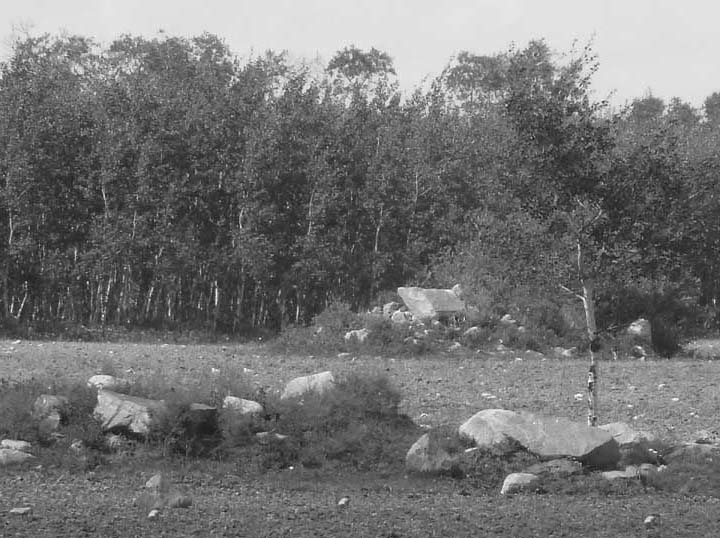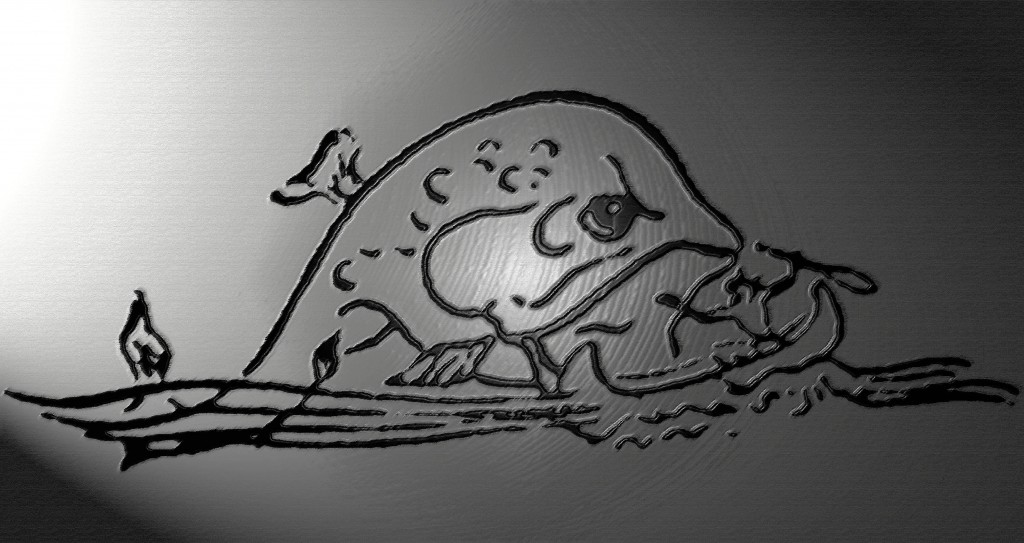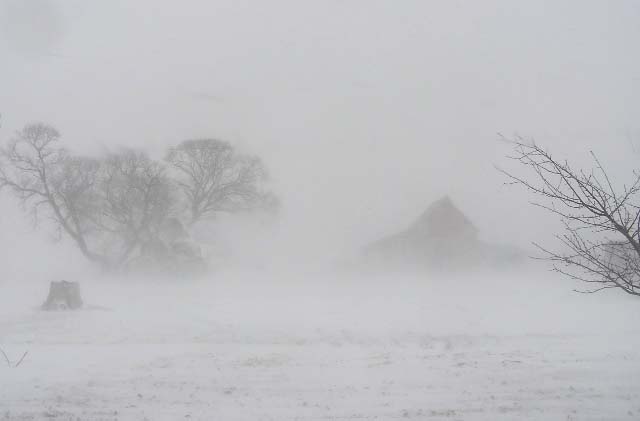Birch Lake – A Place in the Sun: Chapter 3 of 4
Photo (Harold, 2010) Dad worked this field every year trying to make ends meet. He picked those rocks that came back every year as the frost heaved them out of the ground.
As the horses dragged the stone boat around the field, Dave trudged alongside picking rocks and tossing them on the platform. The fence lines and small islands in the field were piled high with rocks of every shape, size and colour, discarded there over three decades by Dave, his brothers and their dad. Each spring a new crop would appear so the men laughingly called themselves “prairie rock farmers” 1.
As searing heat rose in waves from the summer fallow, Dave looked out at another ten thousand rocks strewn across the seemingly endless field. God only knows, it all seemed to so bloody hopeless.
As he trudged silently along he mulled over a life that seemed defined by these rocks:
“What in hell am I doing here? I have been picking these same god forsaken rocks since I was ten and next year, will be picking them again, then again and again. Will it ever end? There must be more to life!
He shuddered, “I need a change or I will go crazy!” As he said this he grabbed a rock and flung it hard against the pile forming in the centre of the field. The horses jumped as it ricocheted loudly, rejoining the myriad still waiting on the field.
Mother Nature – there was no way she was going to be thwarted! Dave continued to think long and hard about why he continued to stay in Birch Lake. The thought of ‘chucking it all’ and moving on excited him.
End of Introduction
The full story, including this Chapter, is now in book form;
This Book is available from
Kindle Direct Publishing
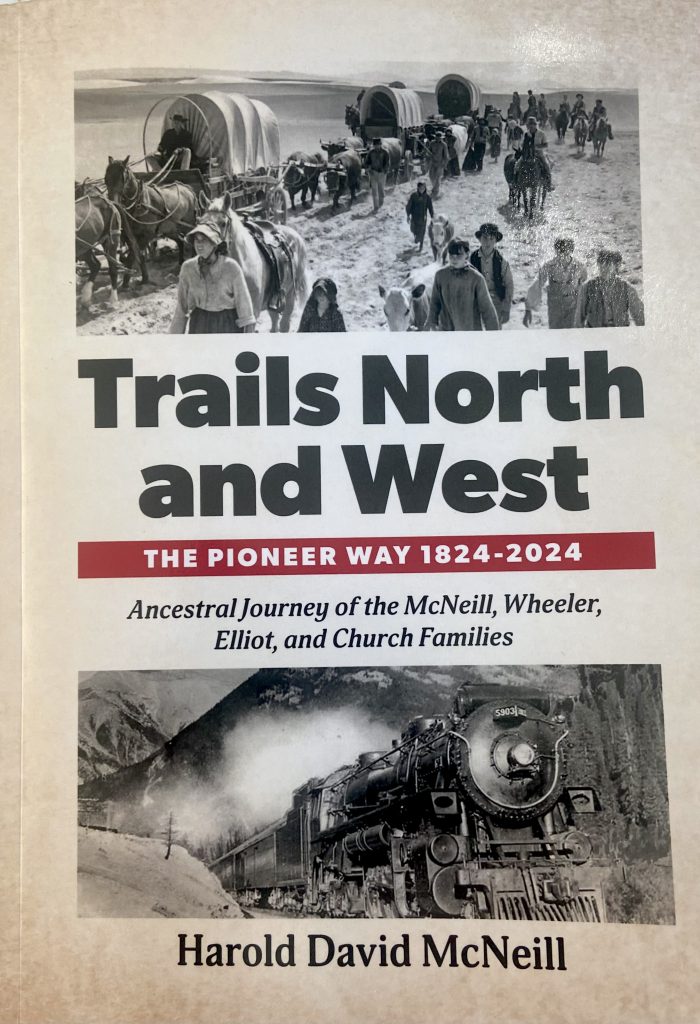
Book 2 -Trails North an and West: The Pioneer Way 1824-2024 is now available from Kindle Direct Publishing (KDP) You can search by book title or author name. A preview of the first seventeen pages is provided (link on bottom left on the KDP order page). The preview also includes the Table of Contents.
Note: When ordering four or fewer books, they will be printed and shipped within Canada. An order of 5 or more books may be printed and shipped from the United States. Postage is included in the purchase price when ordering from either country.
If you are thinking of sending books as gifts to others, you may consider having those books mailed directly to the recipient(s), by Amazon, at time of ordering. In this way, you would avoid Canada Post fees which currently run about $20.00 (plus tax) for one or two books, if enclosed in a single mailer.
For more background information on the story, go to the lead story on this blog.
Cheers,
Harold
Link to Next Post: Fire Tower
Link to Last Post: A New Beginning
Link to Family Stories Index
(1491)
O’Canada … In All Thy Son’s Command
Controversial? Yes. Necessary? Indeed.
O’Canada, In all of us command.
(Feb 2018 1408)
March 2010: An item in the Conservative throne speech about changing two words in ‘O’Canada’, created a significant negative response even though the suggested change is long overdue. It seems doubtful, at this time, that the government will follow through. It’s equally likely that within the next decade the change will be made.
While we in the ‘older’ generation are often accused of being out of touch with the times, it seems that getting stuck in a rut is not just the preserve of the older generation. If the current debate about changing the word ‘son’ to something gender neutral is used as the benchmark, the younger generation can be as equally stubborn.
 Creating gender equality has been a long, slow process for many countries including Canada. Replacing the word ‘son’ in our Anthem is a small but symbolically important part of the process.
Creating gender equality has been a long, slow process for many countries including Canada. Replacing the word ‘son’ in our Anthem is a small but symbolically important part of the process.
Think back to some of the earlier challenges in our evolving democracy:
• It was well into the 1920s1 before women began to gain enfranchisement across Canada. Enfranchisement is considered a basic right in a democratic society yet women had to wait 50 years following confederation before that right began to creep across Canada, with all Provinces entering by 1949.
• As recently as 50 years ago, women in a few Canadian provinces were prohibited from entering beer parlours. Even in the more ‘progressive’ provinces, women often had to enter via a designated entrance with an escort. They were then seated in a segregated section.2
(1864)
A Predictable Accident?
Above: Queen of the North en route through the Inside Passage on the West Coast of Canada. Having traveled on dozens of Cruise ships of various size, as well as hundreds of trips on BC Ferries including an occasional trip on the Queen of the North through the inside passage, I am amazed there are not more accidents given the oceans of the world can produce extremely challenging situations. The loss of that classic ship, the Queen of the North is just one more example of how things can go catastrophically within the blink of an eye.
Note: It appears that on occasion when making a simple one-word change, a whole paragraph can be replicated. I have not yet determined why this takes place, so please bear with me when this happens. Harold
Of the special items on the Queen of the North were several large murals that decorated the walls along the passageways. Photos, depicting various historical sites along the route, were accompanied by a written history of each site and surrounding area. The murals and stories were prepared under the direction of a long-time friend and former BC Provincial Archeologist, Bjorn Simonson. My wife, Lynn McNeill assisted in the preparation. As this work was completed perhaps a decade before the sinking, I don’t know if they were still being displayed when the Queen of the North sank on that fateful day in 2006.
(Activity: May 1, 2017 – 2712)
Follow-up News Reports, June 2013
Karl Lilgert, the navigating officer on the ill-fated Queen of the North, leaves the court after being found guilty of Criminal Negligence Causing Death. His being sentenced to four years in a Federal Penitentiary very much surprised me (see comments near the end of this post relating to the essential elements of a Criminal Negligence charge). I have no doubt the constant stream of inflammatory media reports as well as the vicious presentation by the Crown, had a strong influence on the jury.
to four years in a Federal Penitentiary very much surprised me (see comments near the end of this post relating to the essential elements of a Criminal Negligence charge). I have no doubt the constant stream of inflammatory media reports as well as the vicious presentation by the Crown, had a strong influence on the jury.
During my thirty-year police career, experience taught me that convicting someone on a charge of Criminal Negligence Causing Death was a particularly onerous task. As discussed further on in this article, each element of that particular statute presents a very real challenge for the investigators and crown.
In particular, I have been involved in other cases where the “wanton and reckless” disregard for life was considerably more egregious than in the Lilgert case, yet his case ended with a conviction. In my opinion, it was a stretch to have found each of the elements of the charge were proven in his case. I would be very surprised if either the charge or the sentence, perhaps both, were not tossed out on appeal.
Harold
(3083)
Big Kinosoo: Dangerous Waters Run Deep, Chapter 6/6
Photo (Family Files): As the sun was setting, we all took a walk along Kinosoo Beach. Those waters may look peaceful on the surface, but in depths lurks a monster that with one look could make that infamous white shark Jaws retreat. I was desperately worried about the safety of Sampi and his family, but he was a man on a mission and was not about to be deterred. All I could do was pray they safely returned.
This is the last post in the Kinosoo Series. Perhaps more will be added later
See the van Rensburg update in the footer
Link to Last Post: Sampi gets hooked
Link Back to Adventures Index
Chapter 6: Dangerous Waters Run Deep
The September long week-end traditionally marks the end of summer in Canada. While September can be one of the most glorious month, the final week-end before school starts brings out thousands of city dwellers and country folk alike as they hit the road for that final week-end at the beach or on the water.
In Cold Lake the campground was booked to capacity and the Marina overflowing with fishing and sailing boats of every make, model and size. Line ups at the boat launch could stretch for blocks. The bars and night spots opened early and stayed open late. Fishing, sailing, hunting, hiking, biking, water skiing or simply lazing on the beach – the great outdoors around Cold Lake had something for everyone.
(1834)
Big Kinosoo – Monster Fresh Water Fish in Canada – Chapter 2 of 6
This Big Kinosoo Graphic is copied and modifited from the original on the cover of “Treasured Scales of the Kinosoo” a biographical/pictoral history of pioneer familes who settled in Cold Lake during the last century. The book was edited by Laura Dean Skarsen.
Link to Next Post: The Rush is on.
Link to Last Post: The Big Kinosoo
Link Back to Adventures Index
Monster Freshwater Fish of Canada
It was not until I moved from Victoria to Vancouver in 1965 to complete training at the Vancouver Police Academy, that I first realized the Big Kinosoo might not be the only large fish to ply the fresh water lakes and rivers of Canada.
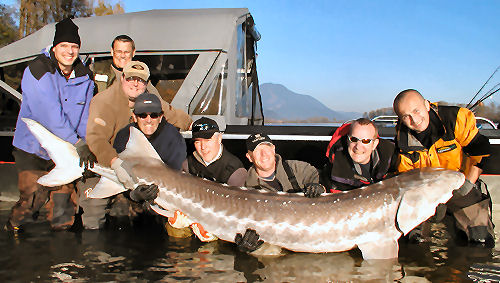 One day I happened to be reading an article in one of the Vancouver papers about a group of fisherman having caught a giant fish in the Fraser River somewhere near Chilliwack. The fish, a White Sturgeon, weighed in at close to 1000 lbs (453 kgs) and took several hours to land.
One day I happened to be reading an article in one of the Vancouver papers about a group of fisherman having caught a giant fish in the Fraser River somewhere near Chilliwack. The fish, a White Sturgeon, weighed in at close to 1000 lbs (453 kgs) and took several hours to land.
My thoughts raced back to Cold Lake and the big Kinosoo. I also recalled there was a river north of Edmonton, the Sturgeon River, and wondered if it might contain or might have once contained similar giants.
I did no further research at that time as my life was headed in other directions and it was not until long after I retired that my thoughts again returned to the Big Kinosoo. The web provided a wonderful search tool and, sure enough, I was able to come up with number of photos of giant fish that can be found right here in Canada.
(3091)
Birch Lake – The Blizzard of ’41 – Chapter 1
Photo (Saskatchewan Farm Life): In the early years of living on the farm in Saskatchewan, winter blizzards could arrive suddenly and last for days. Travelling in such such conditions could be a dangerous affair.
Link to Next Post: A New Beginning
Back to Main Index
Deep Winter, 1941: A Baby is Born
Just after ten in the morning, the pain struck, causing the expectant mother to double over. She grabbed the kitchen table to keep from falling, and as the pain eased, she lowered herself into an easy chair near the log fire. Home alone, two miles from the nearest neighbour, ten from the village of Glaslyn, and forty-five from the hospital in Edam, she was frightened. With no idea what time her husband might return, she considered walking to the nearest neighbour, something she did many times. But now, amid this January blizzard, with its bone-chilling cold, and drifting snow, that was out of the question.
The full story, including this Chapter, is now in book form;
This Book is available from
Kindle Direct Publishing

Book 2 -Trails North an and West: The Pioneer Way 1824-2024 is now available from Kindle Direct Publishing (KDP) You can search by book title or author name. A preview of the first seventeen pages is provided (link on bottom left on the KDP order page). The preview also includes the Table of Contents.
Note: When ordering four or fewer books, they will be printed and shipped within Canada. An order of 5 or more books may be printed and shipped from the United States. Postage is included in the purchase price when ordering from either country.
If you are thinking of sending books as gifts to others, you may consider having those books mailed directly to the recipient(s), by Amazon, at time of ordering. In this way, you would avoid Canada Post fees which currently run about $20.00 (plus tax) for one or two books, if enclosed in a single mailer.
For more background information on the story, go to the lead story on this blog.
Cheers,
Harold
(3343)
Big Kinosoo: The Rush is On – Legend Becomes Reality – Chapter 3 of 6
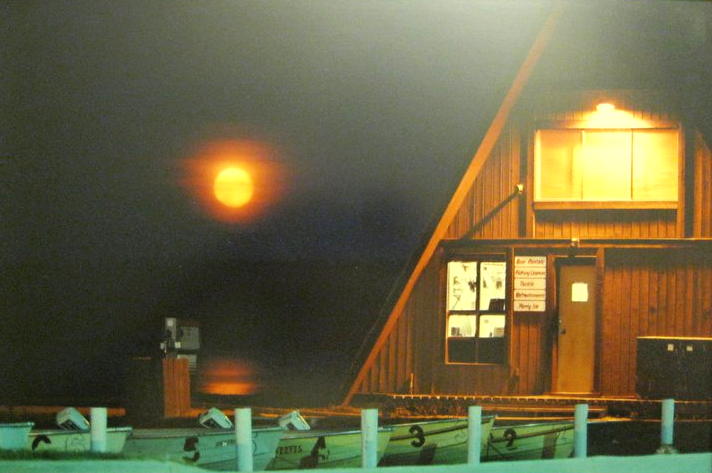
Photo: Copy of framed photo in the dining room at the home of my sister Louise and her husband Frank Yochim. This is Franks Cold Lake Marina as it looked in the late 1960s after being moved to the Main Dock. For thirty years my brother-in-law, along with members of the family operated the Marina and following his retirement, his son Lorin Yochim took over for several years before heading out to explore the world.
Link to Next Post: DHC-3 Fish Attack.
Link to Last Post: Monster Fish
Link Back to Adventures Index
Big Kinosoo: First Half of the 1900s
Photos: Mr. Labatt, left, and Mr. Z.A. Lefebvre, with three monster trout caught in Cold Lake between 1915 and 1918. It is not hard to imagine there were, and still are, fish larger than these in Cold Lake. Pictures were copied from “Treasured Scales of the Kinosoo”, a compilation of the history of Cold Lake by Laura Dean Skarsen.
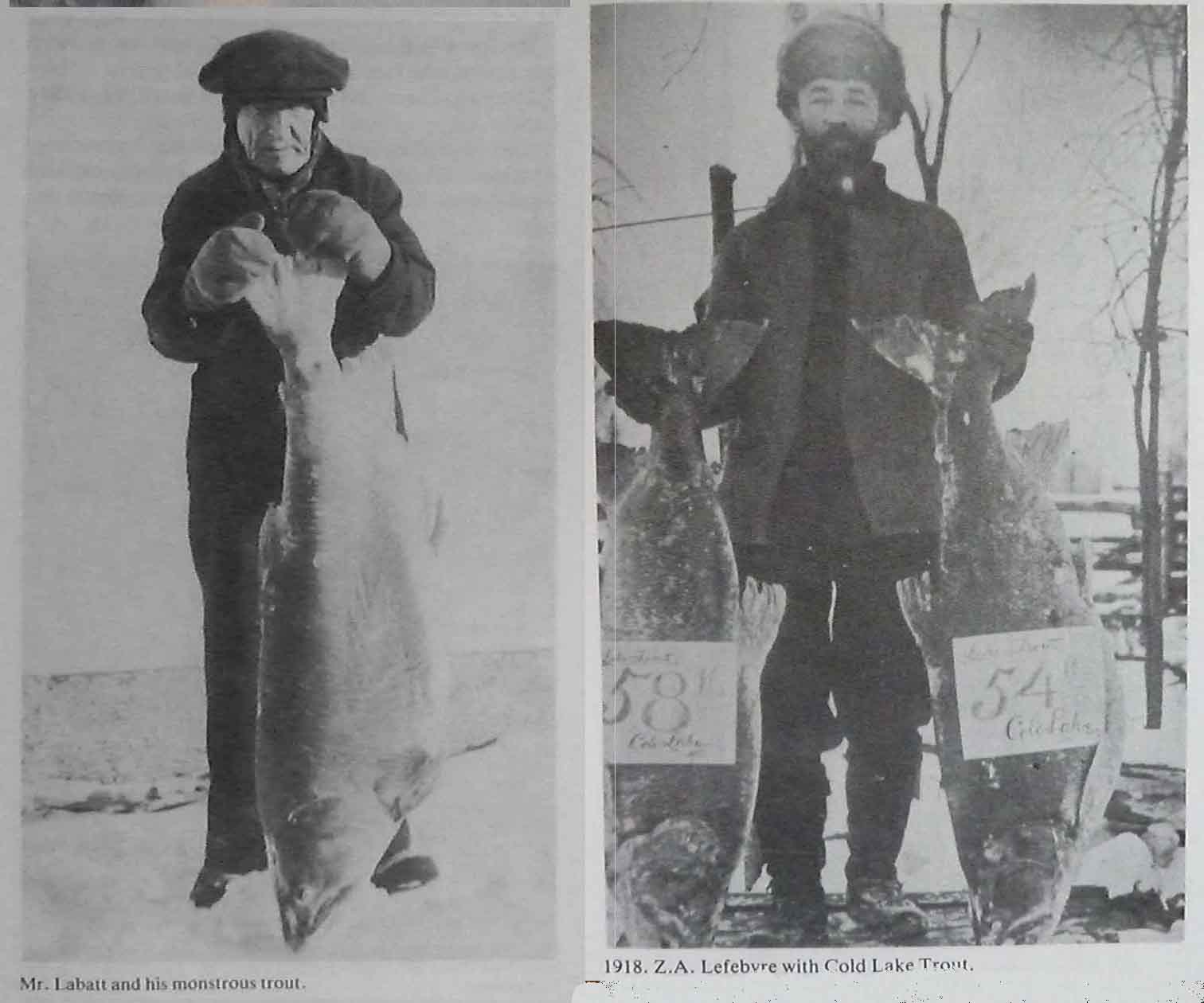
The Rush is On
Many who arrived in Cold Lake early in the 20th Century to take up the search for the Big Kinosoo, decided to stay. Many became trappers, loggers, farmers, cattlemen, while others opened businesses in order to raise money to continue their search for the big fish. In their search they caught many other big fish, but never the Big Kinosoo. He was, by all accounts, one very elusive fish. By the middle of the century, many new residents were taking jobs building the new Canadian Forces Air Base west of town. Still later, hundreds of these workers accepted more permanent positions when the base became operational.
(1484)

